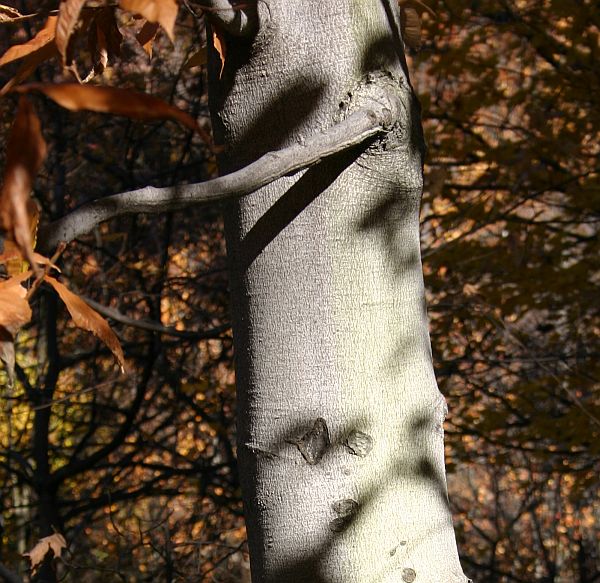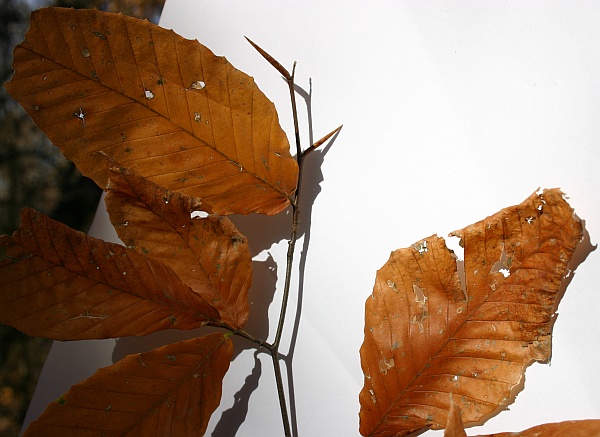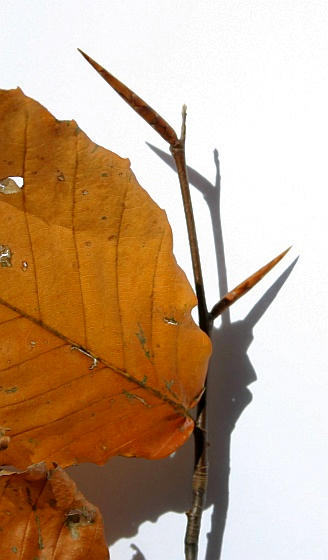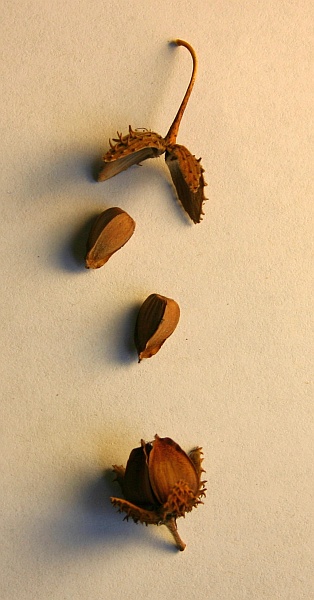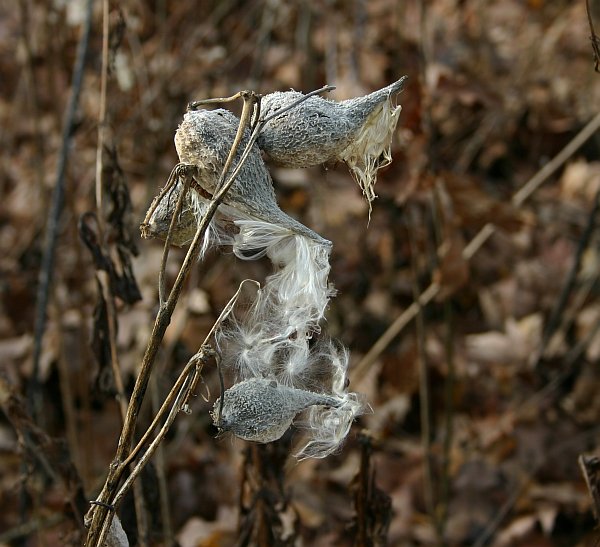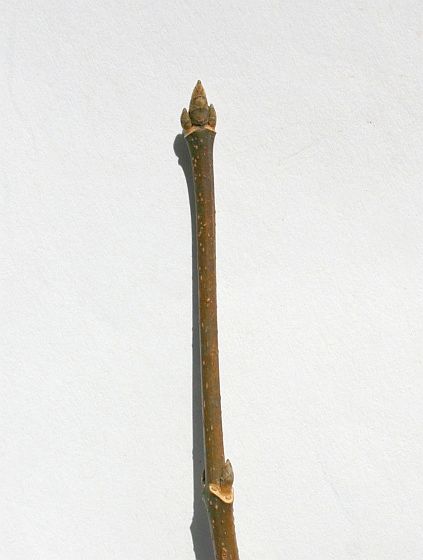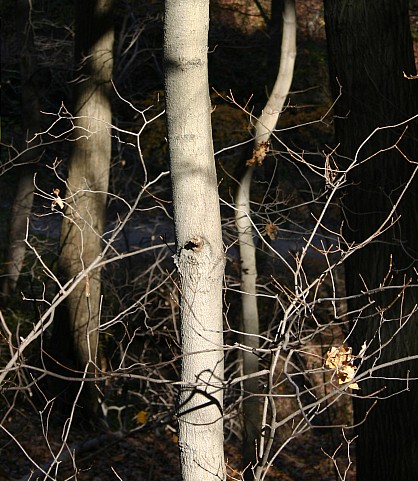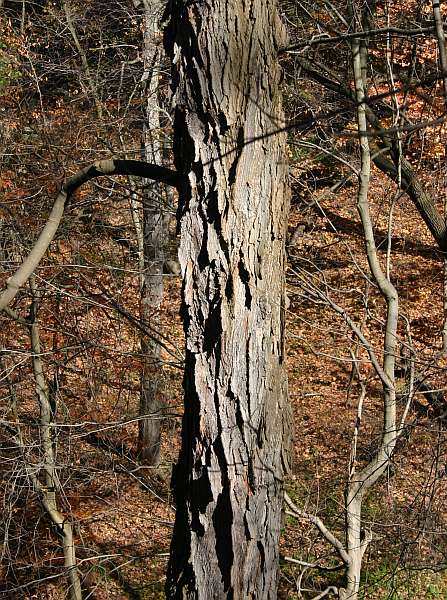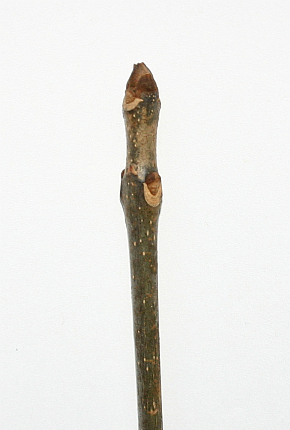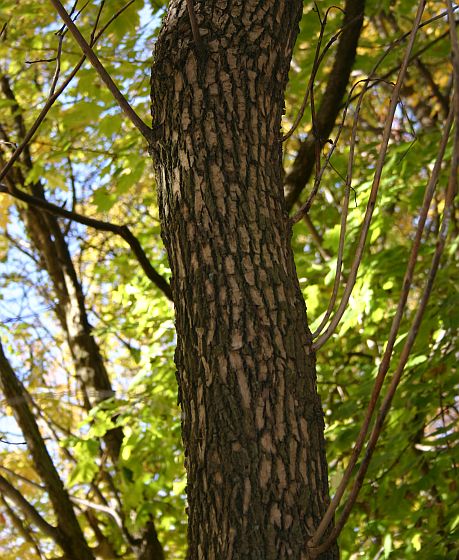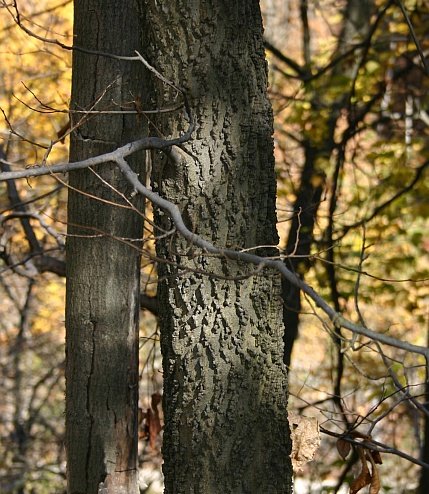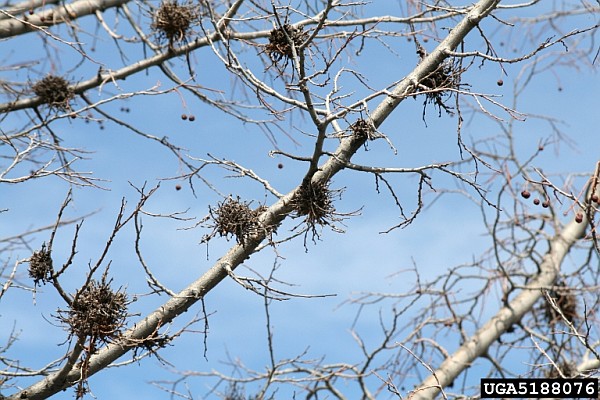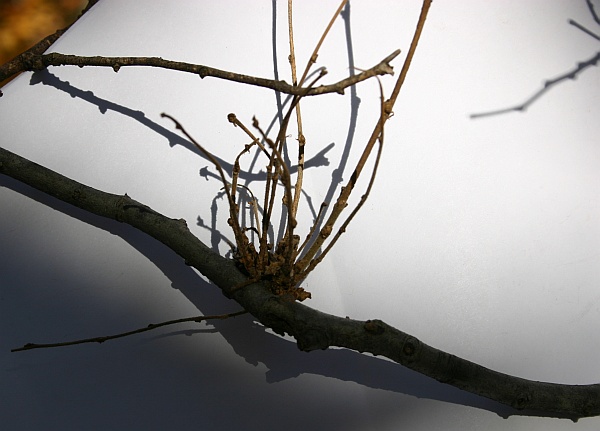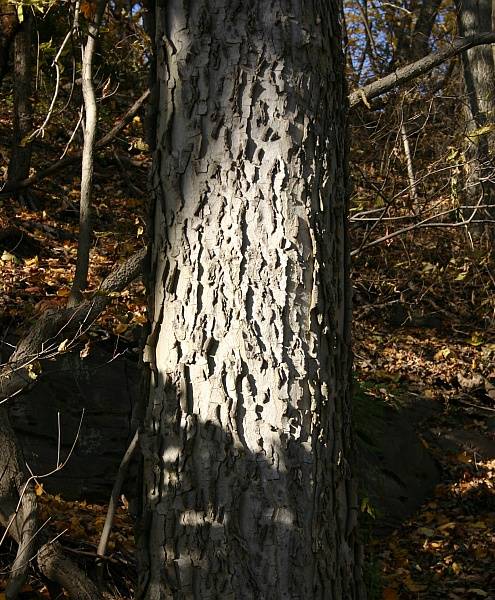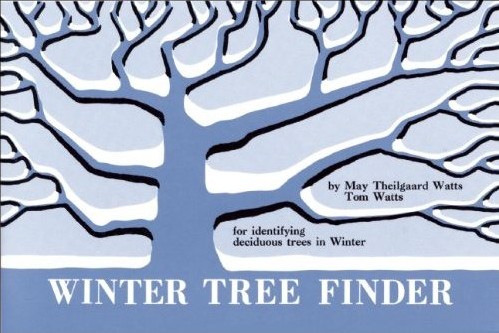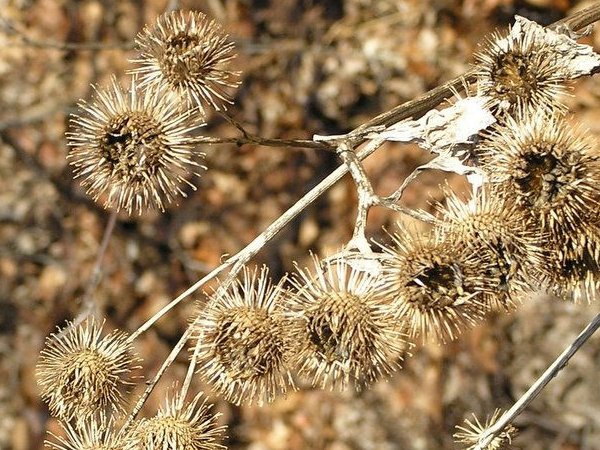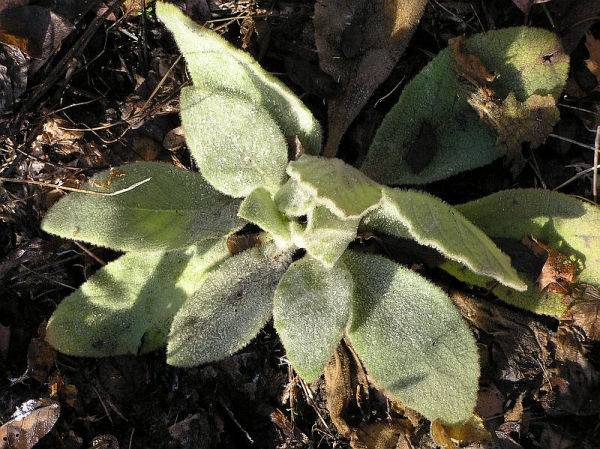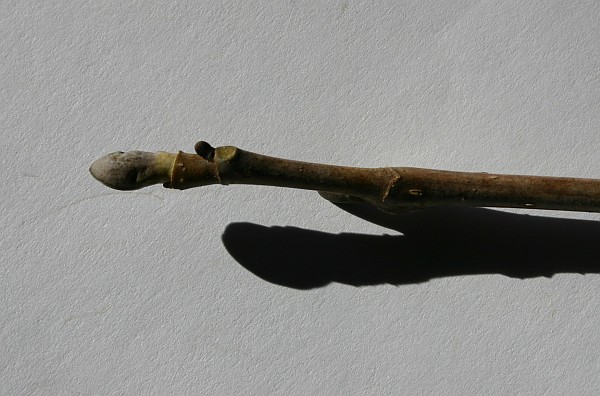
The tuliptree (Liriodendron tulipifera) is easy to identify by its leaves, flowers, fruits and seeds but more of challenge when you’re limited to twigs and bark.
In early winter, look up and you’ll find the tree dotted with upright, drying fruits shaped like flowers. Each one is a seed cluster of samaras attached at the base of the “flower.”
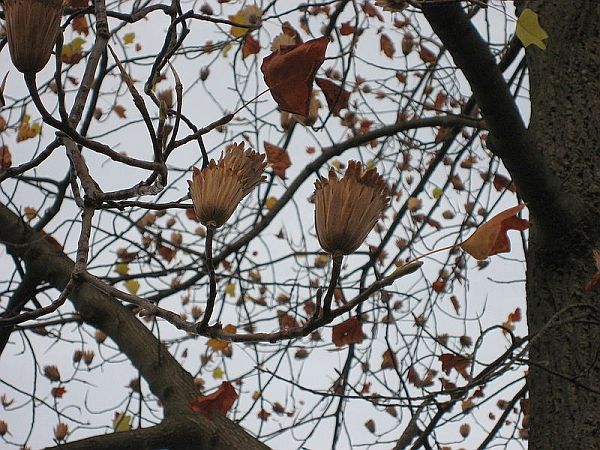
As time passes, the fruits dry and the samaras blow away from the tree or fall to the ground below. They look like rounded skis with a lump at the toe.
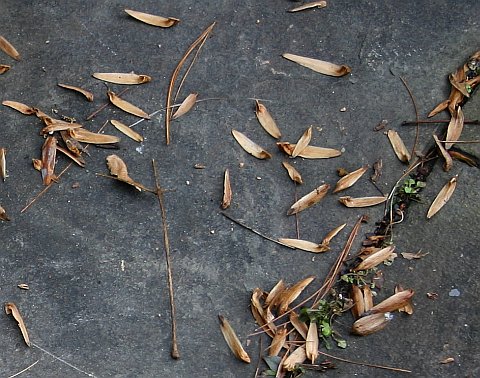
In the absence of these clues examine the twigs, trunk and bark.
The reddish-brown twigs are less than 1/2 inch thick and have alternate leaf buds with a single large end bud shaped like a duck’s bill. This shape is your big clue that it’s a tuliptree. I’ve read that this bud encloses the nascent leaves until the frosts are past, then the leaves unfurl like wings. Also notice the stipule scar that surrounds the twig where the leaf used to be.
I’ve seen both reddish-dark-gray and deep-red end buds in Schenley Park. Dark gray is shown in the first photo, deep red below:
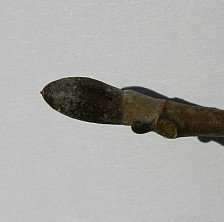
Identifying the tree by its bark is another story. The best clue is the shape of the trunk. It’s very straight and tall with no lower branches because these trees grow so fast. Tuliptrees are shade intolerant and put all their energy into the trunk during their surge to the sun. Along the way they drop their lower branches and leave a big upside down smile on the bark where the branch used to be. This is noticeable on younger trees whose bark has flat-topped ridges with lighter furrows, shown here:
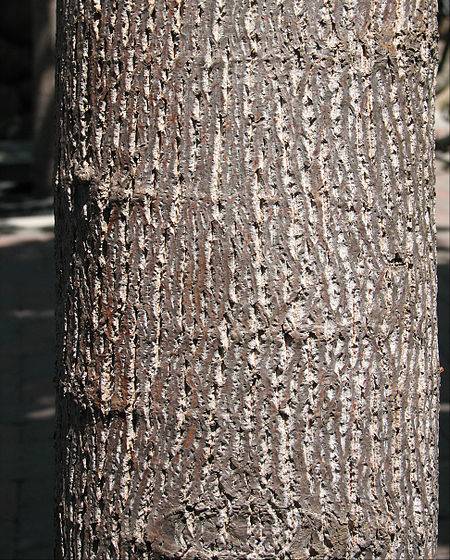
On older trees the ridges look less flat-topped, the furrows aren’t as light and the smiles are hard to find, though you will see horizontal line breaks in the bark:
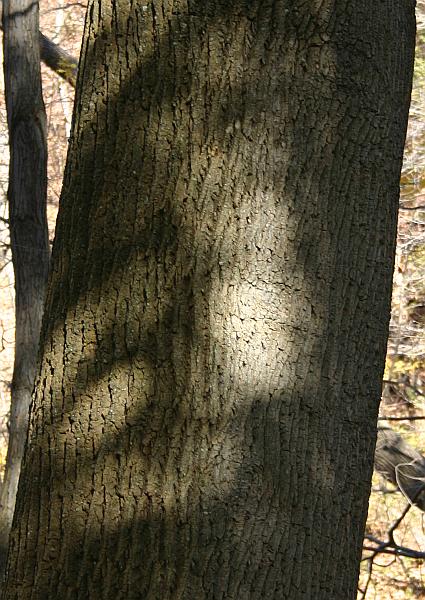
When young tuliptrees reach the top of the canopy, their crowns are shaped like candle flames which they resemble when their leaves turn yellow in autumn. They drop their leaves from the bottom first leaving a few fluttering leaves at the top in late November as the “candles” are going out.
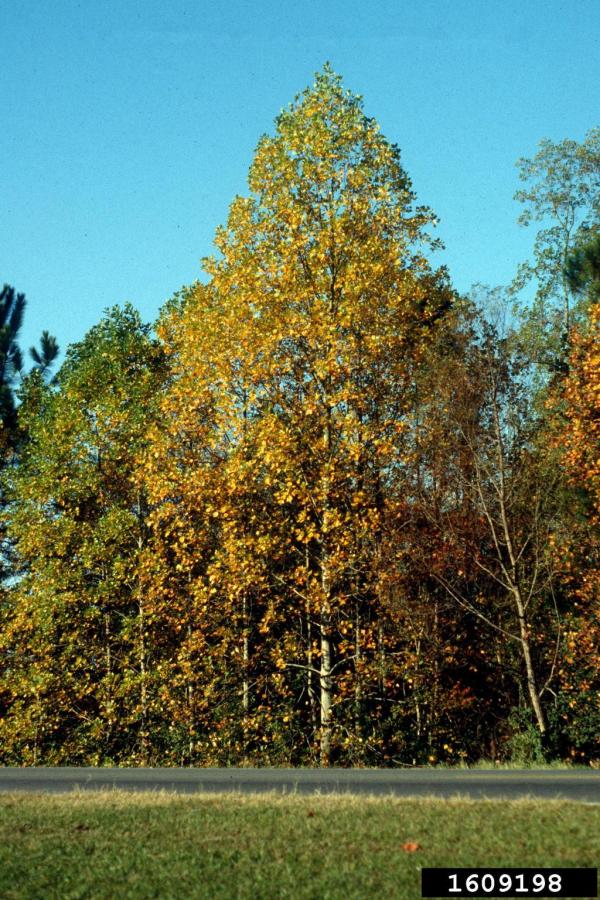
Perhaps the fluttering yellow leaves gave them the alternate name of yellow-poplar. The tuliptree is not a poplar, though. It’s in the magnolia family and will have beautiful flowers in the spring.
(Buds and bark photos by Kate St. John. Samara and young bark photos from Wikimedia Commons. Autumn tuliptree by John Ruter, Univ of Georgia at Bugwood.org. Click on the captions to see the originals.)
